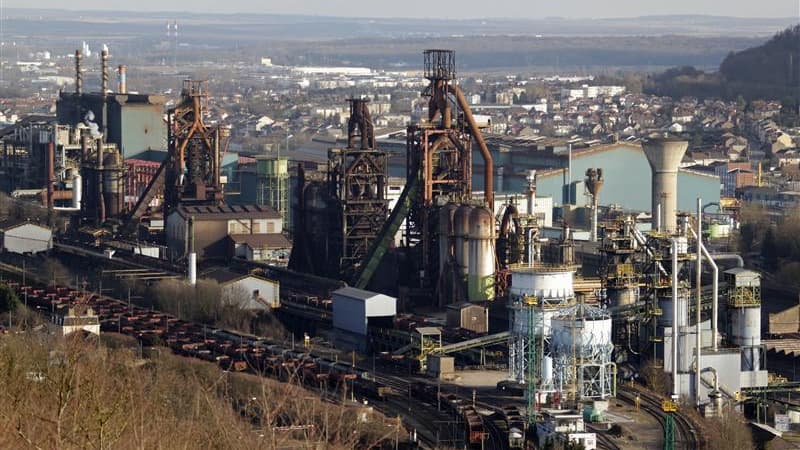The increase in energy prices, the uncertainties linked to the war in Ukraine and, above all, the slowdown in Chinese investment have significantly slowed steel production in the world this year, putting on hold the ambitious energy transition initiated by the European steel industry.
In the first half of the year, world crude steel production fell 5.4% compared to the first six months of 2021, to 1.1 billion tons, according to the World Steel association that groups 64 producing countries.
ArcelorMittal directly affected by the war
The decline is violent in Russia, in its satellites (Belarus, Kazakhstan, Moldova, Uzbekistan) and in Ukraine: total steel production shows a drop of 18.8% to 50.5 million tons in the first half, according to WorldSteel.
Symbol of this collapse, the Azovstal ironworks in Mariupol, used as an entrenched camp by the Ukrainian army, was reduced to a state of ruin in the fierce fighting against the Russians. ArcelorMittal, the world’s second largest steelmaker, also announced at the start of the war in March the closure of the country’s main factory, at Kryvy Rig.
In the European Union, the decrease amounted to 5.6% for 86 million tons from January to June. The most significant decrease is perceived in the main producing continent, Asia, with -4.8% to 812.6 million tons. Only the Middle East is doing well, with production rising 4.4% to 25.3m tonnes.
Closed European Blast Furnaces
In the United States, the drop in steel demand began in the third quarter of 2021, but after an exceptional rebound due to the post-Covid recovery, Rystad Energy said in an analysis released on Tuesday. “The US market continues to weaken as recession fears intensify,” added the firm, which sees a “grim” short-term future for US steel.
In Europe, Arcelor Mittal announced last weekend that it would close two of its blast furnaces, in Bremen (Germany) from the end of September, as well as in Gijón in Asturias (Spain).
In France, one of the three blast furnaces at Dunkerque (north) has been closed since July as part of the decarbonisation of the site, and the second will be for maintenance for at least six weeks.
“China, which for more than 20 years has been the engine of growth in the world steel industry through the construction of infrastructure, roads and factories, has announced that it will stabilize or even reduce its consumption of steel,” Marcel Genet, steelmaker, reminds AFP. . expert and founder of Laplace Conseil. However, Chinese consumption accounted for 90% of steel growth in the last 20 years. This places European steel, in the midst of an energy transition, in a particularly precarious position.
The situation in Ukraine, a brake on the energy transition
“Until last year, all the steel companies present in Europe, Germany’s ThyssenKrupp, India’s Tatasteel or ArcelorMittal in particular, agreed on an orderly transition in the sector,” recalls Genet. In other words, progressively replacing the old coal-fired blast furnaces, which emit about two tons of CO2 per ton of steel produced, by a so-called “direct reduction” principle fueled by gas. This would make it possible to halve CO2 emissions from the steel industry by 2040, recalls Mr. Genet.
The next step in the energy transition was the switch to so-called “green” hydrogen (itself produced with electricity from renewable sources) instead of gas, in the hope of no longer generating CO2 through steel production. The plan has been validated by the European Commission, which has included gas in the taxonomy of energies considered acceptable for the transition. But the war in Ukraine has interrupted all these scenarios, because the price of natural gas has increased tenfold in the last year.
According to him, “we should accelerate the arrival of renewable and nuclear energies” if we want to continue manufacturing steel in Europe.
Source: BFM TV


